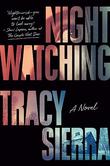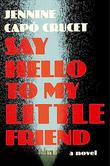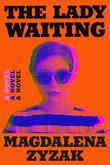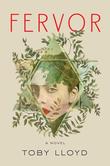
by Valeria Luiselli ; translated by Christina MacSweeney ‧ RELEASE DATE: Sept. 15, 2015
A clever philosophical novel that, as the author puts it, has “less to do with lying than surpassing the truth.”
Awards & Accolades
Our Verdict

GET IT
Kirkus Reviews'
Best Books Of 2015
Kirkus Prize
finalist
National Book Critics Circle Finalist
A lively, loopy experimental novel rich with musings on language, art, and, yes, teeth.
Each section of the second novel by Mexican author Luiselli (Faces in the Crowd, 2014) opens with an epigram about the disconnect between the signifier and signified. If you dozed off during lectures on semiotics in college, fear not: though the author is interested in the slippery nature of description, this novel’s style and tone are brisk and jargon-free. The narrator, Gustavo, has decided late in life to become an auctioneer (“to have my teeth fixed”), a job he thrives at in part by skillfully overhyping the values of the objects on offer. Not that he’s immune to being oversold himself: did the new set of teeth he buys at auction really once belong to Marilyn Monroe? The skeletal plot focuses on Gustavo’s hosting an auction to benefit a church outside Mexico City, his hoard of prized objects, and his reunion with his son. But the book lives in its offbeat digressions, like an extended discussion of literary eminences’ lives via their teeth. (St. Augustine was inspired to write his Confessions due to a toothache; G.K. Chesterson had a marble-chewing habit; false teeth were recommended to calm Virginia Woolf’s inner turmoil.) But all this dental chatter isn’t precisely the point. “We have here before us today pieces of great value, since each contains a story replete with small lessons,” Gustavo tells a group of auction attendees, and the whole book is a kind of extended commentary on how possessions acquire value largely through the stories we tell about them. (In an afterword, Luiselli explains that this “novel-essay” was inspired by such questions and was first written for workers in a factory outside Mexico City that has a gallery connected to it.)
A clever philosophical novel that, as the author puts it, has “less to do with lying than surpassing the truth.”Pub Date: Sept. 15, 2015
ISBN: 978-1-56689-409-8
Page Count: 184
Publisher: Coffee House
Review Posted Online: June 30, 2015
Kirkus Reviews Issue: July 15, 2015
Share your opinion of this book
More by Valeria Luiselli
BOOK REVIEW
BOOK REVIEW
by Valeria Luiselli translated by Lizzie Davis
BOOK REVIEW
by Valeria Luiselli translated by Christina MacSweeney

by Claire Lombardo ‧ RELEASE DATE: June 25, 2019
Characters flip between bottomless self-regard and pitiless self-loathing while, as late as the second-to-last chapter, yet...
Four Chicago sisters anchor a sharp, sly family story of feminine guile and guilt.
Newcomer Lombardo brews all seven deadly sins into a fun and brimming tale of an unapologetically bougie couple and their unruly daughters. In the opening scene, Liza Sorenson, daughter No. 3, flirts with a groomsman at her sister’s wedding. “There’s four of you?” he asked. “What’s that like?” Her retort: “It’s a vast hormonal hellscape. A marathon of instability and hair products.” Thus begins a story bristling with a particular kind of female intel. When Wendy, the oldest, sets her sights on a mate, she “made sure she left her mark throughout his house—soy milk in the fridge, box of tampons under the sink, surreptitious spritzes of her Bulgari musk on the sheets.” Turbulent Wendy is the novel’s best character, exuding a delectable bratty-ness. The parents—Marilyn, all pluck and busy optimism, and David, a genial family doctor—strike their offspring as impossibly happy. Lombardo levels this vision by interspersing chapters of the Sorenson parents’ early lean times with chapters about their daughters’ wobbly forays into adulthood. The central story unfurls over a single event-choked year, begun by Wendy, who unlatches a closed adoption and springs on her family the boy her stuffy married sister, Violet, gave away 15 years earlier. (The sisters improbably kept David and Marilyn clueless with a phony study-abroad scheme.) Into this churn, Lombardo adds cancer, infidelity, a heart attack, another unplanned pregnancy, a stillbirth, and an office crush for David. Meanwhile, youngest daughter Grace perpetrates a whopper, and “every day the lie was growing like mold, furring her judgment.” The writing here is silky, if occasionally overwrought. Still, the deft touches—a neighborhood fundraiser for a Little Free Library, a Twilight character as erotic touchstone—delight. The class calibrations are divine even as the utter apolitical whiteness of the Sorenson world becomes hard to fathom.
Characters flip between bottomless self-regard and pitiless self-loathing while, as late as the second-to-last chapter, yet another pleasurable tendril of sisterly malice uncurls.Pub Date: June 25, 2019
ISBN: 978-0-385-54425-2
Page Count: 544
Publisher: Doubleday
Review Posted Online: March 3, 2019
Kirkus Reviews Issue: March 15, 2019
Share your opinion of this book
More About This Book
SEEN & HEARD

by Mark Z. Danielewski ‧ RELEASE DATE: March 6, 2000
The story's very ambiguity steadily feeds its mysteriousness and power, and Danielewski's mastery of postmodernist and...
An amazingly intricate and ambitious first novel - ten years in the making - that puts an engrossing new spin on the traditional haunted-house tale.
Texts within texts, preceded by intriguing introductory material and followed by 150 pages of appendices and related "documents" and photographs, tell the story of a mysterious old house in a Virginia suburb inhabited by esteemed photographer-filmmaker Will Navidson, his companion Karen Green (an ex-fashion model), and their young children Daisy and Chad. The record of their experiences therein is preserved in Will's film The Davidson Record - which is the subject of an unpublished manuscript left behind by a (possibly insane) old man, Frank Zampano - which falls into the possession of Johnny Truant, a drifter who has survived an abusive childhood and the perverse possessiveness of his mad mother (who is institutionalized). As Johnny reads Zampano's manuscript, he adds his own (autobiographical) annotations to the scholarly ones that already adorn and clutter the text (a trick perhaps influenced by David Foster Wallace's Infinite Jest) - and begins experiencing panic attacks and episodes of disorientation that echo with ominous precision the content of Davidson's film (their house's interior proves, "impossibly," to be larger than its exterior; previously unnoticed doors and corridors extend inward inexplicably, and swallow up or traumatize all who dare to "explore" their recesses). Danielewski skillfully manipulates the reader's expectations and fears, employing ingeniously skewed typography, and throwing out hints that the house's apparent malevolence may be related to the history of the Jamestown colony, or to Davidson's Pulitzer Prize-winning photograph of a dying Vietnamese child stalked by a waiting vulture. Or, as "some critics [have suggested,] the house's mutations reflect the psychology of anyone who enters it."
The story's very ambiguity steadily feeds its mysteriousness and power, and Danielewski's mastery of postmodernist and cinema-derived rhetoric up the ante continuously, and stunningly. One of the most impressive excursions into the supernatural in many a year.Pub Date: March 6, 2000
ISBN: 0-375-70376-4
Page Count: 704
Publisher: Pantheon
Review Posted Online: May 19, 2010
Kirkus Reviews Issue: Feb. 1, 2000
Share your opinion of this book
More by Mark Z. Danielewski
BOOK REVIEW
BOOK REVIEW
BOOK REVIEW
© Copyright 2024 Kirkus Media LLC. All Rights Reserved.
Hey there, book lover.
We’re glad you found a book that interests you!
We can’t wait for you to join Kirkus!
It’s free and takes less than 10 seconds!
Already have an account? Log in.
OR
Trouble signing in? Retrieve credentials.
Welcome Back!
OR
Trouble signing in? Retrieve credentials.
Don’t fret. We’ll find you.





